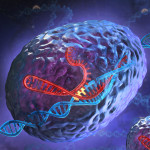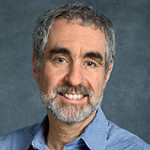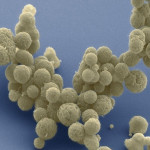 Emery Station Operations Center (ESOC) welcomed a French Synthetic Biology Delegation on April 13. The delegation was led by the IAR Cluster (Pôle de Compétitivité IAR), which brings together more than 320 stakeholders from research, higher education, industry (SMEs and large companies) and agriculture with a common goal: the optimal valorization of renewable resources. IAR’s four R&I fields include biofuels, biomaterials (biopolymers and bio-composites), biochemicals and bio-ingredients.
Emery Station Operations Center (ESOC) welcomed a French Synthetic Biology Delegation on April 13. The delegation was led by the IAR Cluster (Pôle de Compétitivité IAR), which brings together more than 320 stakeholders from research, higher education, industry (SMEs and large companies) and agriculture with a common goal: the optimal valorization of renewable resources. IAR’s four R&I fields include biofuels, biomaterials (biopolymers and bio-composites), biochemicals and bio-ingredients.
Tracking the Onset of Alzheimer’s
An April 9 San Francisco Chronicle story, “Brain scan could detect Alzheimer’s in earliest stages,” featured work by William Jagust, senior faculty in the Molecular Biophysics & Integrated Bioimaging Division. The story was based on a campus news release written by the Lab’s Public Affairs’ Sarah Yang.
Scientists have developed an imaging process that for the first time, they say, can identify and track the progression of Alzheimer’s disease in people’s brains, even when there are no symptoms — a development that could lead to earlier diagnosis and treatment for a disease that has become more pervasive among the growing number of older Americans. “These scans have revolutionized the ways we think about Alzheimer’s disease,” Jagust said. “It’s opened up whole new way of doing research.” Read the full story.
Dangers of Thirdhand Smoke Uncovered
An April 5 US News & World Report story on thirdhand smoke (THS), the toxic contamination that remains after the cigarette is extinguished, quoted Bo Hang, biochemist staff scientist in the Biological Systems & Engineering Division. Previous studies, led by Hang, have found that THS can damage DNA in human cells; subsequent animal studies by others have found that THS damages the liver and lungs, impedes the healing of wounds and can contribute to hyperactivity. Now, new research by Martins Green et al. published in PLOS ONE shows that, in mice, THS causes insulin resistance, a precursor to Type 2 diabetes. “This is a relatively new area,” says Hang, who continues to study the potential harmful effects of thirdhand smoke. Read the full story.
Doudna Awarded $1.5 million from The Paul G. Allen Frontiers Group
 Billionaire Paul Allen has pledged $100 Million to fund life sciences research. The gift represents his initial commitment toward a 10 year plan for The Paul G. Allen Frontiers Group, a new Seattle-based organization recently launched. The initial round of grants includes a $1.5 million grant for molecular and cell biology researcher Jennifer Doudna, who co-invented the CRISPR gene editing technology. She will study new ways of editing genes by targeting RNA. Read more on the Forbes article.
Billionaire Paul Allen has pledged $100 Million to fund life sciences research. The gift represents his initial commitment toward a 10 year plan for The Paul G. Allen Frontiers Group, a new Seattle-based organization recently launched. The initial round of grants includes a $1.5 million grant for molecular and cell biology researcher Jennifer Doudna, who co-invented the CRISPR gene editing technology. She will study new ways of editing genes by targeting RNA. Read more on the Forbes article.
How Many Synthetic Genes Does it Take to Sustain Life?
Scientists at the J. Craig Venter Institute have created a stripped-down life form, with a minimal number of genes needed to keep it going. They hope to use it as a platform to create designer life forms, and say it’s already taught some important, and humbling, lessons about the essence of life. Berkeley Lab’s Adam Arkin, Interim Biosciences Deputy for Science, and Samuel Deutsch, DOE Joint Genome Institute, comment on the research in this NBC News story.
- « Previous Page
- 1
- …
- 189
- 190
- 191
- 192
- 193
- …
- 213
- Next Page »
Was this page useful?






